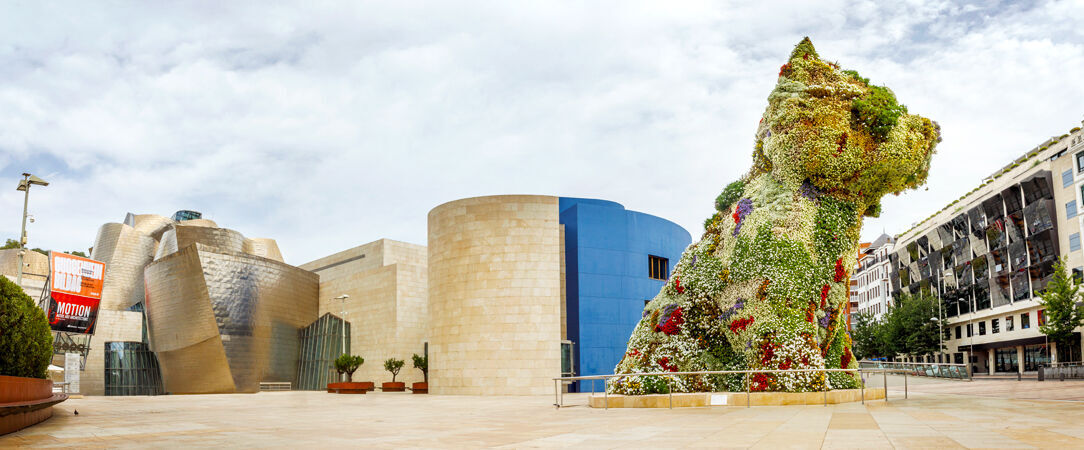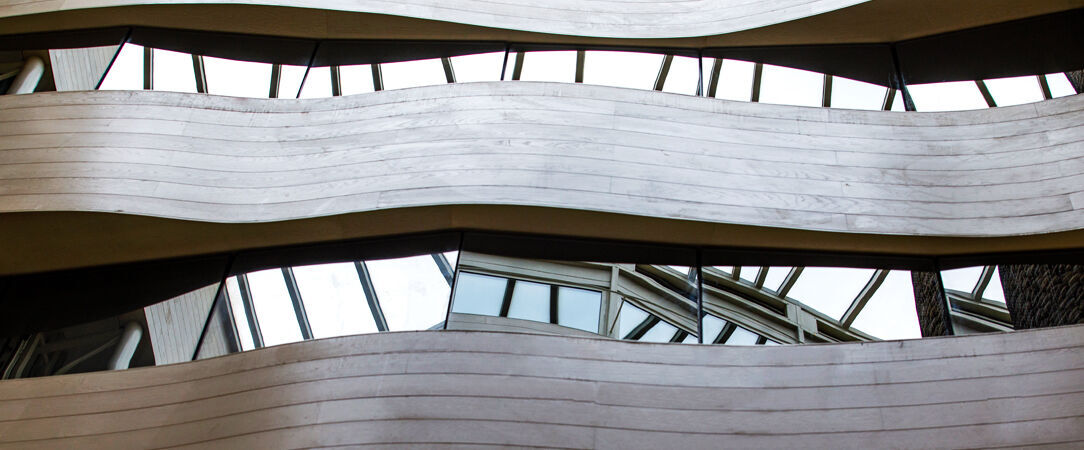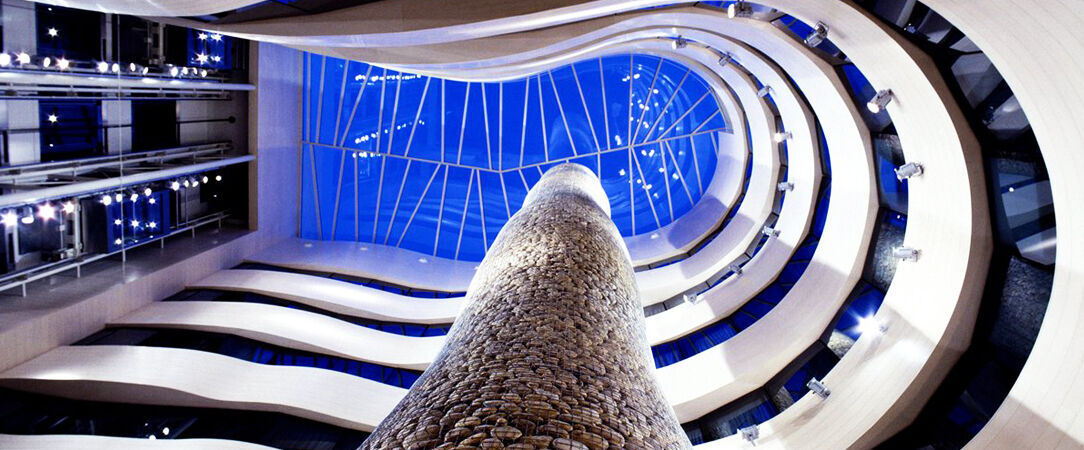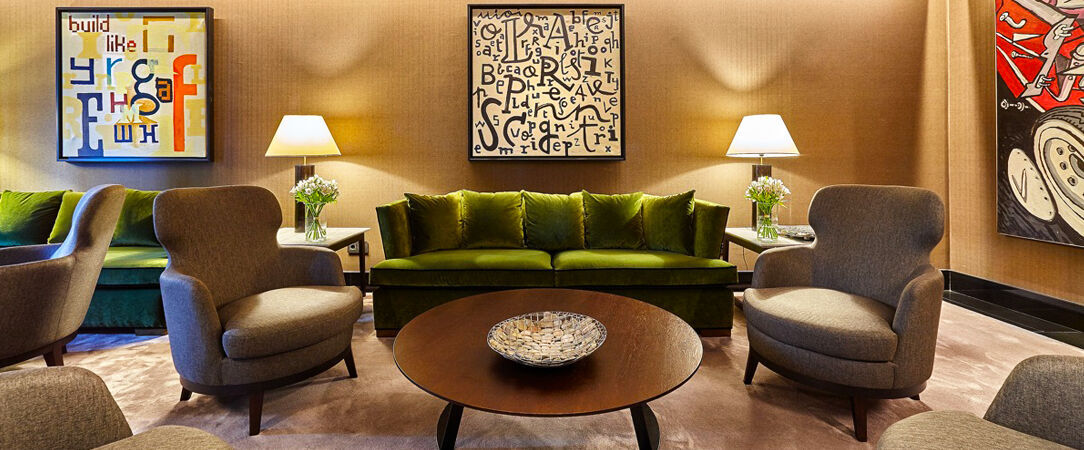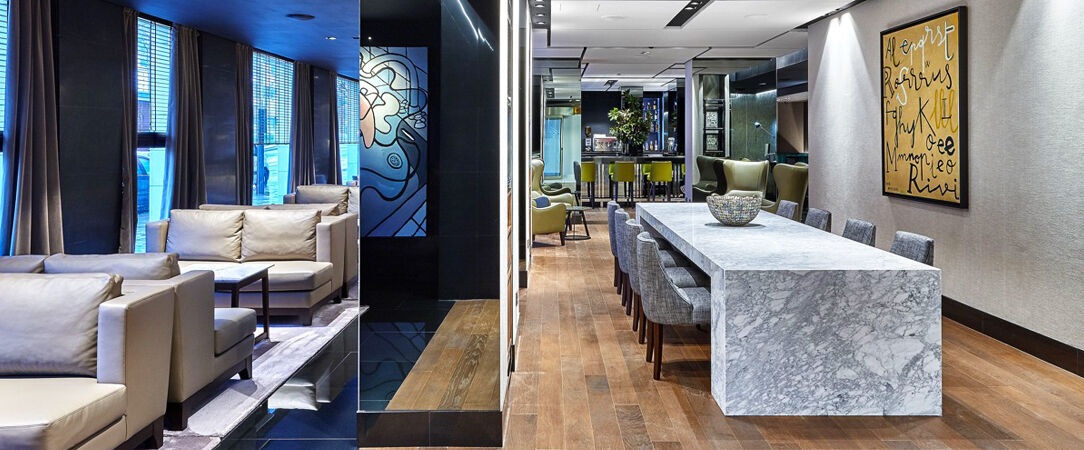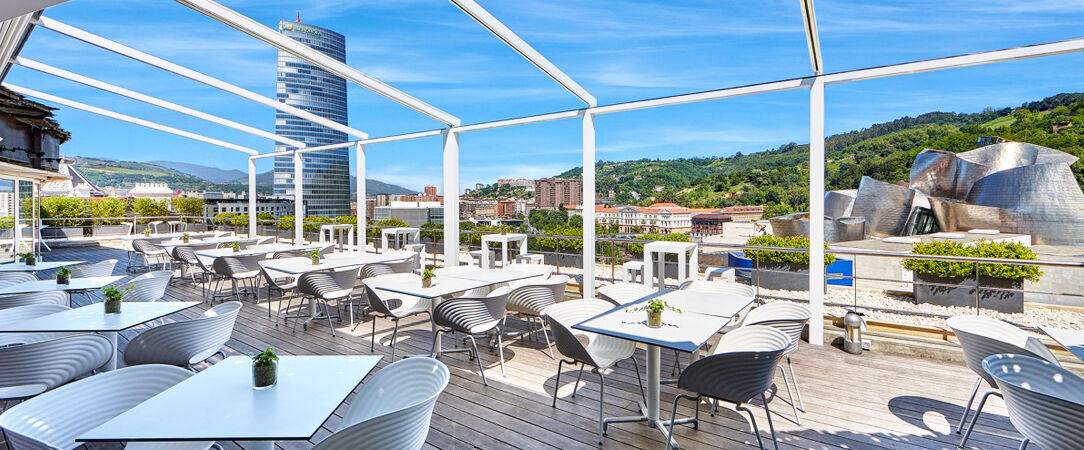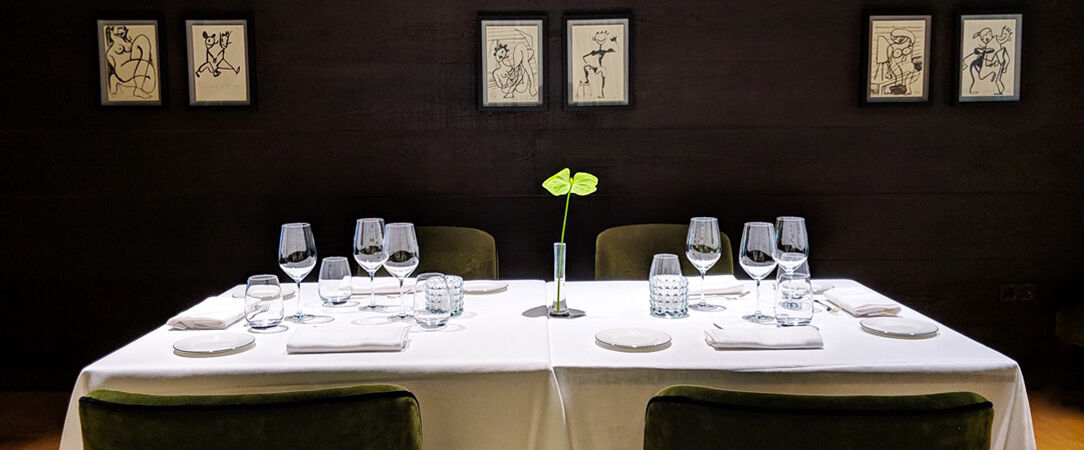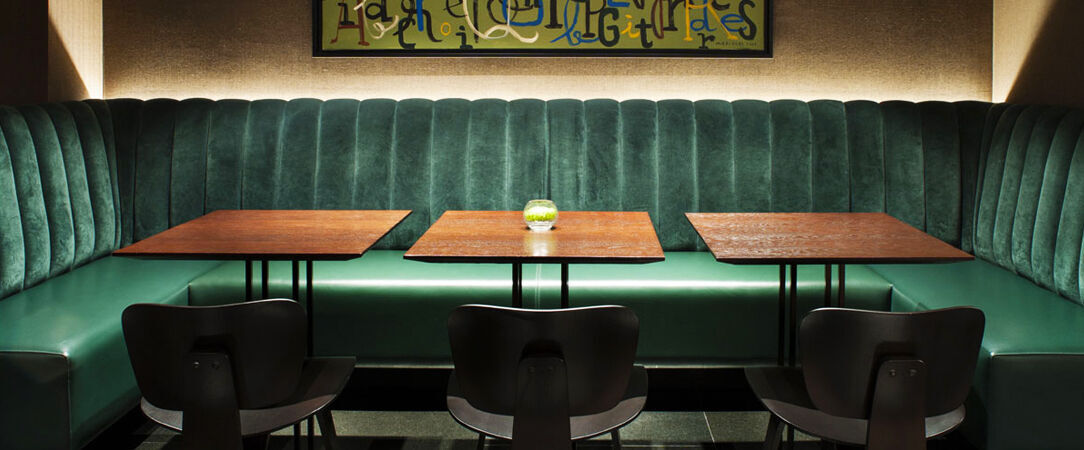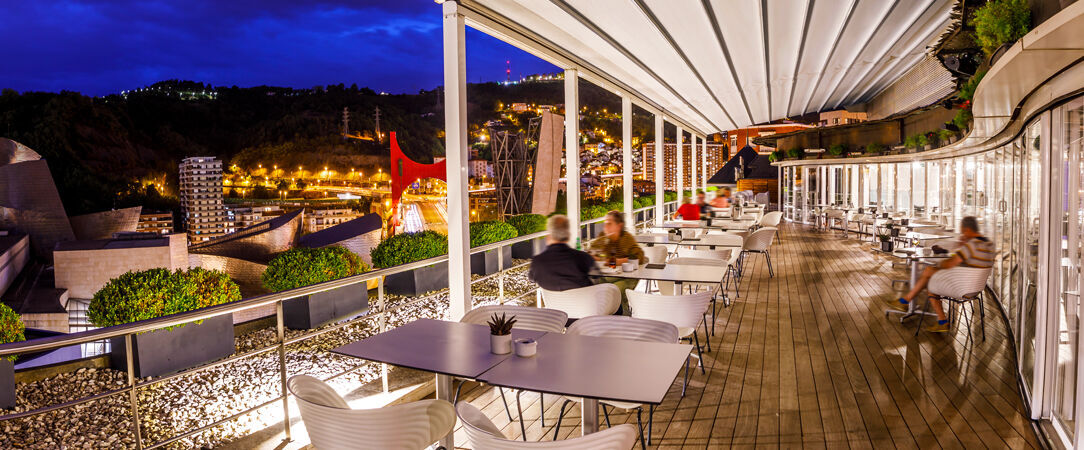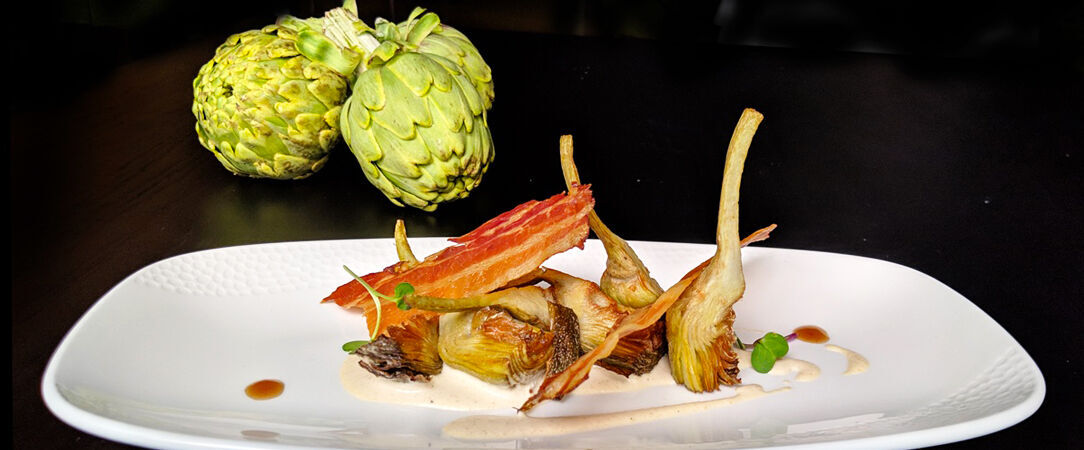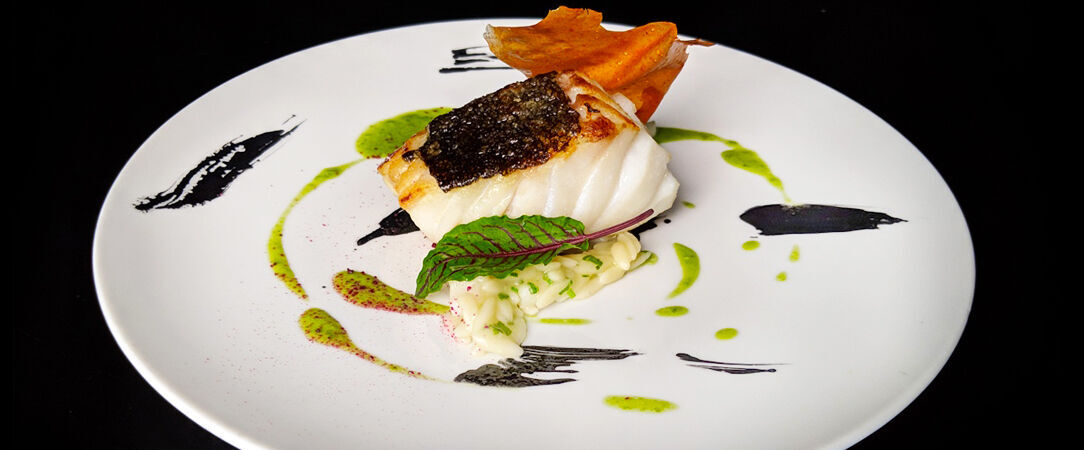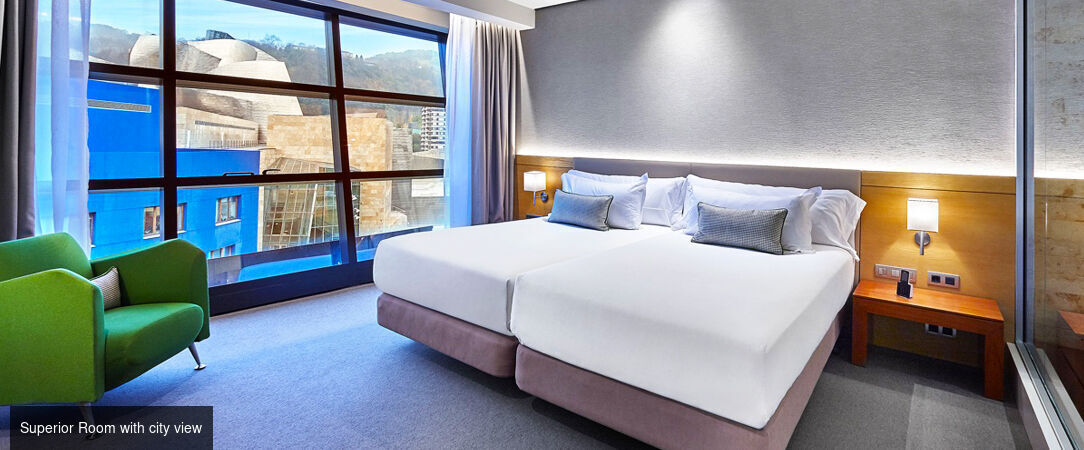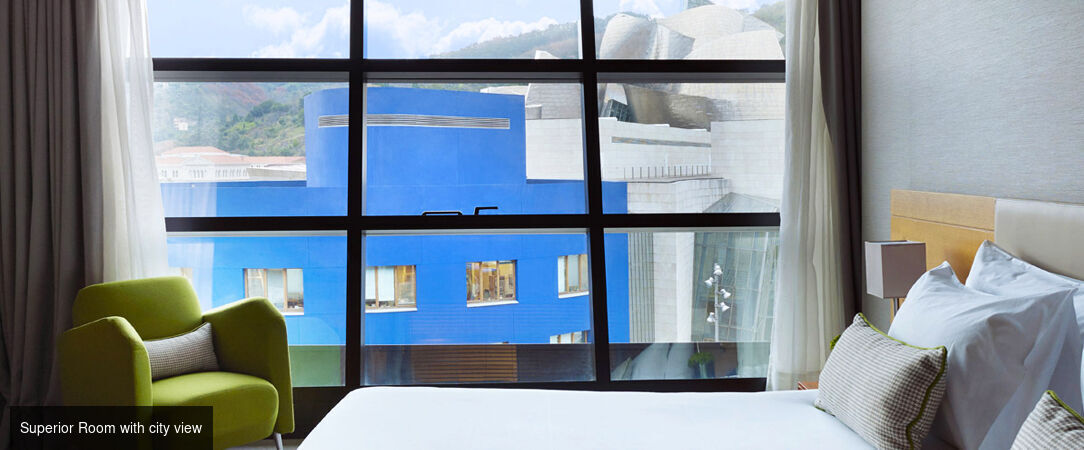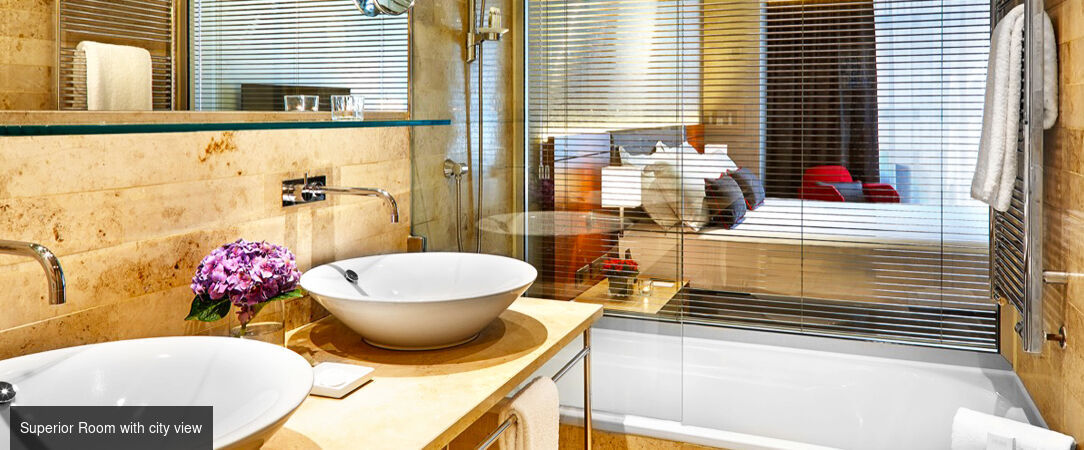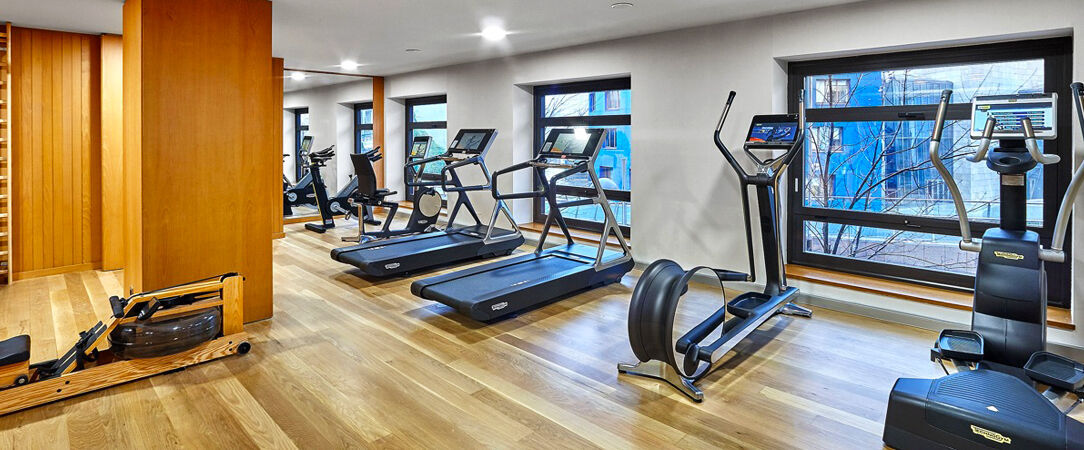This offer has ended
This flash sale is no longer available. Find all our current and upcoming sales:
View all offers Its location opposite the Guggenheim museum, making the hotel the best viewpoint from which to admire its architecture.
Its location opposite the Guggenheim museum, making the hotel the best viewpoint from which to admire its architecture. The tasty breakfast which will set the scene for a perfect day.
The tasty breakfast which will set the scene for a perfect day. The fitness centre and sauna which will leave you feeling relaxed.
The fitness centre and sauna which will leave you feeling relaxed.
The best of Bilbao - modern design, luxury and cuisine opposite the Guggenheim.
On the ground floor, you could not fail to notice Le Café Metropol, an homage to the Bauhaus style which dominated the 1920s. Bedecked in black and white and stainless steel, it also has a glass wall affording views of the museum and Jeff Koons’s famous flowery Puppy, the museum’s gargantuan guard dog. These views are replicated by the Splash and Crash bar on the other side of the main entrance, and which, combined with its trendy ambience and lively music, attract a clientele as cosmopolitan as the atmosphere. In this space, the 1920s are well and truly left behind, with plain whites and daring splashes of red encapsulating the passion and spirit of the 1960s.
And then there is the Txoko quiet corner, much more eclectic with its mixture of styles, a jumble of beautiful pieces of 20th century furniture which retains a calm and cosy atmosphere, particularly in the winter when the fire is roaring. The library of books on design and architecture will embellish your appreciation of the décor around you, and give you an insight into Salas and Mariscal’s inspiration.
More than simply mixing the styles of other great designers, however, these two have left their own unmistakable stamp on the Gran Hotel Domine. Probably the most remarkable feature is Mariscal’s titanic ‘Fossil Cypress’, soaring from the floor all the way up to the skylight which floods the atrium with natural light. So simple but so effective, this colossal monolith is elegant but somehow not ostentatious.
Their style extends into the bedrooms, where nothing is placed without care. Again it is not overbearing, but little touches like quirky artwork and decoration, and chairs which combine straight lines and curves in the style of the Guggenheim, lend the rooms plenty of character. The Guggenheim itself sits invitingly across from the Deluxe rooms and a huge window, or rather a glazed wall, leans out longingly towards it.
Combining form and function, these rooms are supremely comfortable and flawlessly luxurious – you have at your disposal amenities such as excellent sound systems, satellite TV, internet access, mini-bar, climate control and various VIP accessories. Some of the rooms are even designed such that you can enjoy the panoramic view from in the shower, while you can still bring a blind over the glass wall of the bathroom if you refer your privacy.
With the view teasing and tantalising you, it will doubtless not be long before you make the long voyage across the road and explore the Guggenheim. Just as the seemingly random curves of the daring exterior are actually meticulously thought out to catch the light, the interior is fluid and coherent, with a collection of contemporary and modern art to rival the special architecture. Just as the museum transformed the town, it transformed me into a lover of modern art. I had been something of a cynic beforehand, but never before had I come across a museum which blended so seamlessly with its surroundings and with its own exhibits, with spectacular results.
Undeniably dominant as this eye-catching structure may be, there is another side to Bilbao. There is plenty of sightseeing to be done in the Casco Viejo, the medieval old town. With several historic churches and Europe’s largest food market, it is certainly worth strolling along and between its famous Siete Calles (seven streets). And to complete the experience, you absolutely cannot miss soaking in the atmosphere as you try some pintxos. These are the speciality of the Basque Country, found in any bar around, and essentially consist of a skewered form of tapas – authentic, traditional and delicious.
While the rustic charm and character of pintxos are as much a part of the Bilbao experience as the Guggenheim, the altogether more refined cuisine at the hotel’s Doma restaurant offers just as much soul and some of the best flavours you will have ever come across. It is headed by Martín Berasategui, who expertly makes use of local market ingredients to allow diners to savour the typical tastes and sumptuous smells of the Basque Country. It took just one bite of this genius’s food for me to fully comprehend why no man in Spain holds more Michelin stars.
Stylish as it is, you could never accuse the Gran Hotel Domine of being all style no substance. From the modern gym to the brilliant breakfast with breath-taking views from the roof terrace, the hotel proves more than worthy of its five stars. The design in the rooms is complemented by the very best luxuries and functionality, the style of the bars by attentive and friendly service. You could also not deny, however, that design is the principal feature of modern Bilbao, and this is where the hotel truly excels.
Superior Room with city view
Maximum occupancy: 2 people


-
- Surface area: 30 m²
-
- Bed types: 1 double bed or 2 single beds
-
- Bathroom with: bath, toilet, hairdryer, bathrobes, slippers, complimentary toiletries
-
- Room with: city view, telephone, flat screen TV with satellite channels, safe, air conditioning, desk, heating, carpet, minibar
 24-hour reception
24-hour reception
Check in from 2pm and check out by midday 145 rooms (non-smoking)
145 rooms (non-smoking) Wi-Fi available for free in the rooms and common areas of the hotel
Wi-Fi available for free in the rooms and common areas of the hotel Le Café restaurant
Le Café restaurant Bar
Bar The establishment provides disabled and limited mobility access on request and by comfirmation from the hotel
The establishment provides disabled and limited mobility access on request and by comfirmation from the hotel Private parking available on site (advance booking possible) at €25 per day
Private parking available on site (advance booking possible) at €25 per day Pets are permitted in the establishment for €50 per night
Pets are permitted in the establishment for €50 per night
- To get to know all the varieties of jamón iberico (Iberian ham), chorizo and other meats, and particularly to buy some to take home, head to Viandas de Salamanca, where you can see them cut the meat by hand.
11 Calle de Bidebarrieta - From art exhibitions to free concerts, dining on the roof to enjoying a good book in the library or a dip in the pool, the Alhondiga centre has something to keep everyone entertained, all in a quirky, beautiful building.
4 Plaza Arriquibar - For a change from the Guggenheim Museum’s modernism, head to the Fine Arts Museum, a small museum but home to some excellent artworks.
- When you visit the Guggenheim, be sure to visit the museum’s bistro, which offers great food, a scenic terrace, and unsurprisingly artistic surroundings and presentation.
Gran Hotel Domine ★★★★★
Mazarredo Zumarkalea, 77
48009
Bilbao
Spain
The Gran Hotel Domine ***** is a five-star hotel opposite Bilbao’s famous Guggenheim Museum, equally offering spectacular views on the Ría of Bilbao and Mt. Artxanda. It is also surrounded by some of the city’s prime luxury shopping.
BY PLANE

Bilbao Airport (BIO) sits about 9km / 5.5mi north of Bilbao and around 13km / 8mi / 25 minutes' drive from the hotel.
It is a minor international airport, but does receive flights, both year-round and seasonal, from many major European cities, including from the UK.
- Covid-19 health & travel rules for Spain:
Visit the official EU Reopen website to learn about the current local health situation, and entry requirements from EU / Schengen countries or from countries outside the EU / Schengen Area - Local tourist taxes are included in the VeryChic prices
From Monday to Friday from 9 a.m. to 7 p.m. and on Saturdays, Sundays and French bank holidays from 9 a.m. to 6 p.m.
Local call charges may apply.
